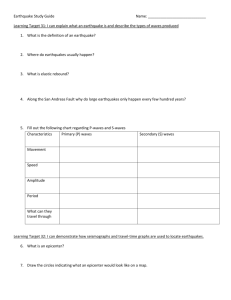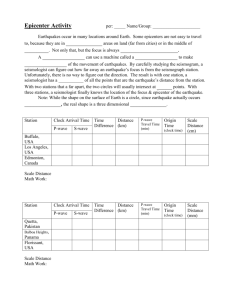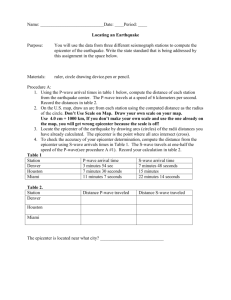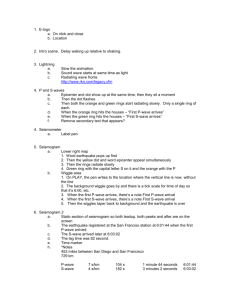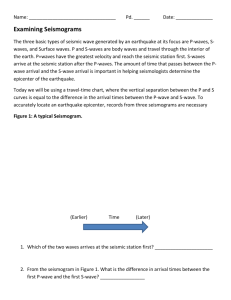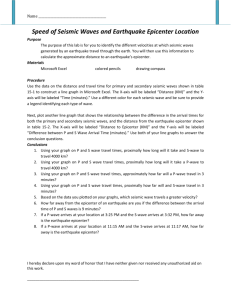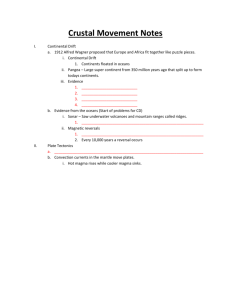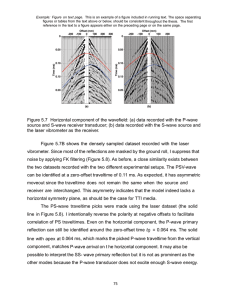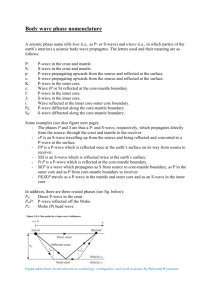Review Sheet: Natural Resources, Plate Tectonics, Earth`s Interior
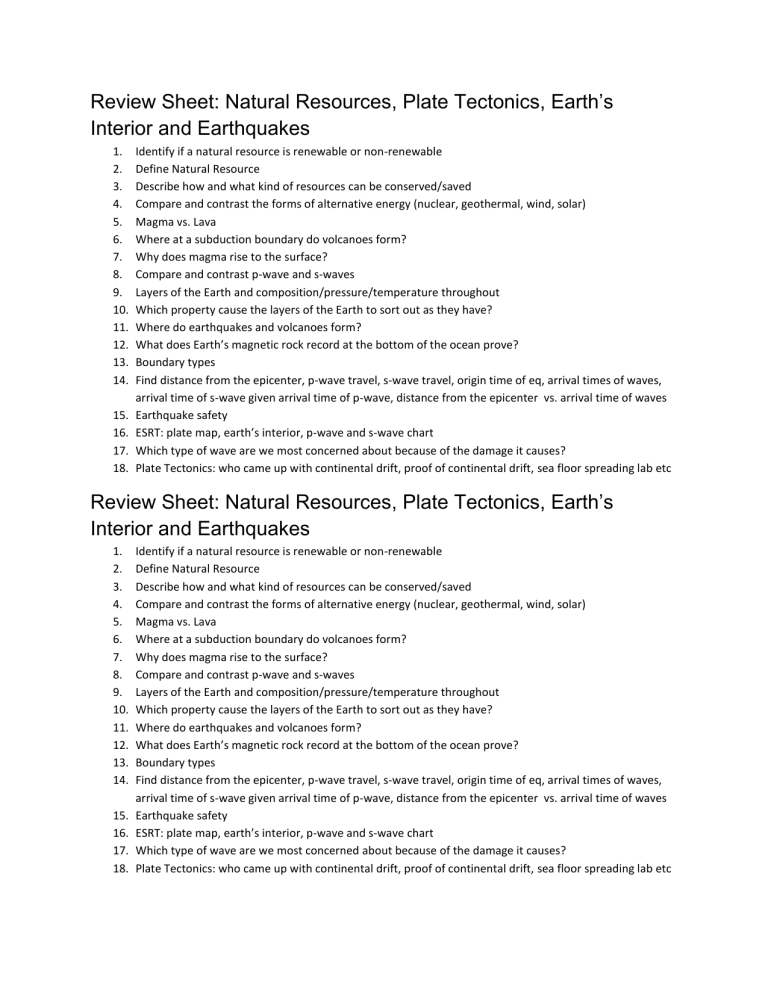
Review Sheet: Natural Resources, Plate Tectonics, Earth’s
Interior and Earthquakes
1.
Identify if a natural resource is renewable or non-renewable
2.
Define Natural Resource
3.
Describe how and what kind of resources can be conserved/saved
4.
Compare and contrast the forms of alternative energy (nuclear, geothermal, wind, solar)
5.
Magma vs. Lava
6.
Where at a subduction boundary do volcanoes form?
7.
Why does magma rise to the surface?
8.
Compare and contrast p-wave and s-waves
9.
Layers of the Earth and composition/pressure/temperature throughout
10.
Which property cause the layers of the Earth to sort out as they have?
11.
Where do earthquakes and volcanoes form?
12.
What does Earth’s magnetic rock record at the bottom of the ocean prove?
13.
Boundary types
14.
Find distance from the epicenter, p-wave travel, s-wave travel, origin time of eq, arrival times of waves, arrival time of s-wave given arrival time of p-wave, distance from the epicenter vs. arrival time of waves
15.
Earthquake safety
16.
ESRT: plate map, earth’s interior, p-wave and s-wave chart
17.
Which type of wave are we most concerned about because of the damage it causes?
18.
Plate Tectonics: who came up with continental drift, proof of continental drift, sea floor spreading lab etc
Review Sheet: Natural Resources, Plate Tectonics, Earth’s
Interior and Earthquakes
1.
Identify if a natural resource is renewable or non-renewable
2.
Define Natural Resource
3.
Describe how and what kind of resources can be conserved/saved
4.
Compare and contrast the forms of alternative energy (nuclear, geothermal, wind, solar)
5.
Magma vs. Lava
6.
Where at a subduction boundary do volcanoes form?
7.
Why does magma rise to the surface?
8.
Compare and contrast p-wave and s-waves
9.
Layers of the Earth and composition/pressure/temperature throughout
10.
Which property cause the layers of the Earth to sort out as they have?
11.
Where do earthquakes and volcanoes form?
12.
What does Earth’s magnetic rock record at the bottom of the ocean prove?
13.
Boundary types
14.
Find distance from the epicenter, p-wave travel, s-wave travel, origin time of eq, arrival times of waves, arrival time of s-wave given arrival time of p-wave, distance from the epicenter vs. arrival time of waves
15.
Earthquake safety
16.
ESRT: plate map, earth’s interior, p-wave and s-wave chart
17.
Which type of wave are we most concerned about because of the damage it causes?
18.
Plate Tectonics: who came up with continental drift, proof of continental drift, sea floor spreading lab etc
